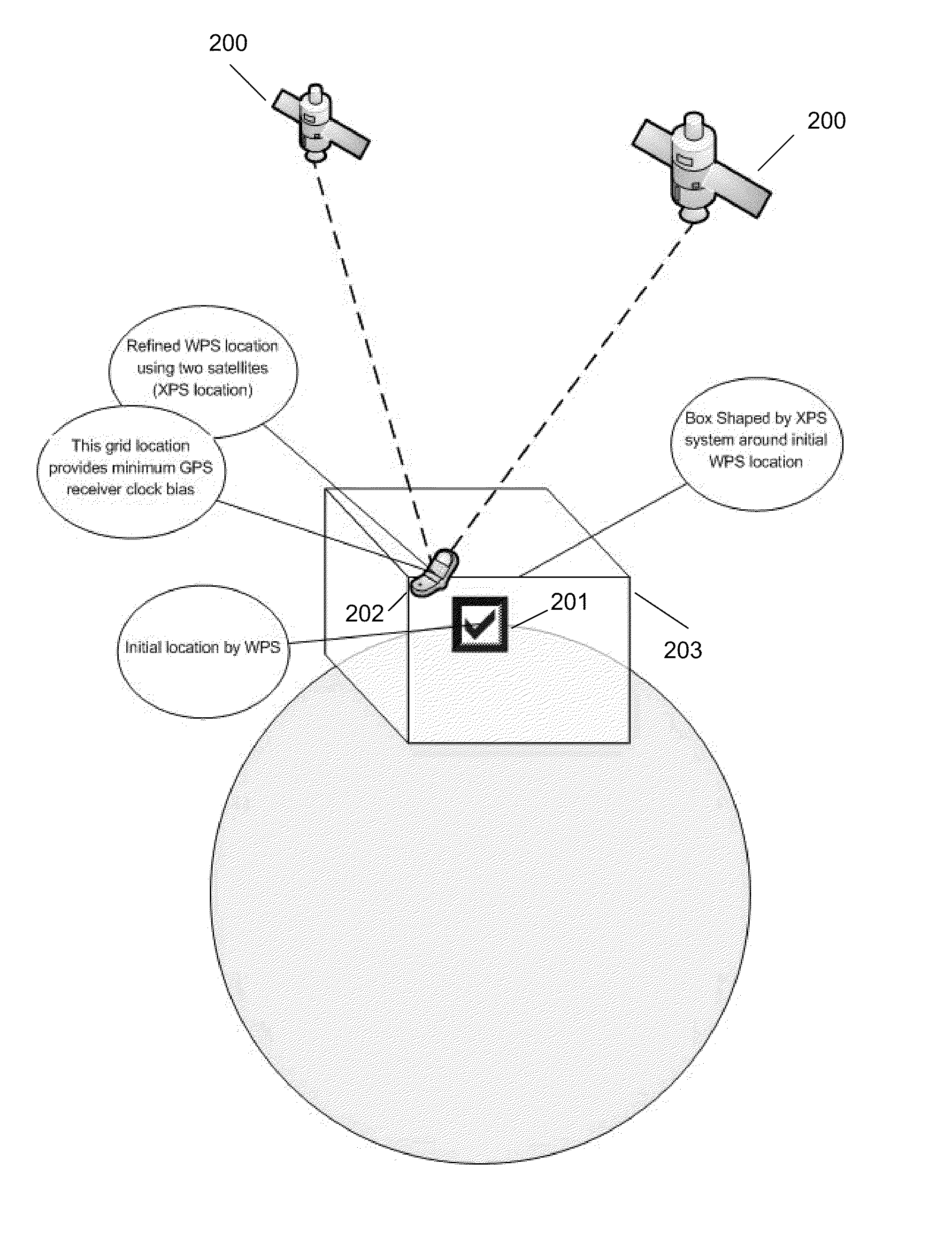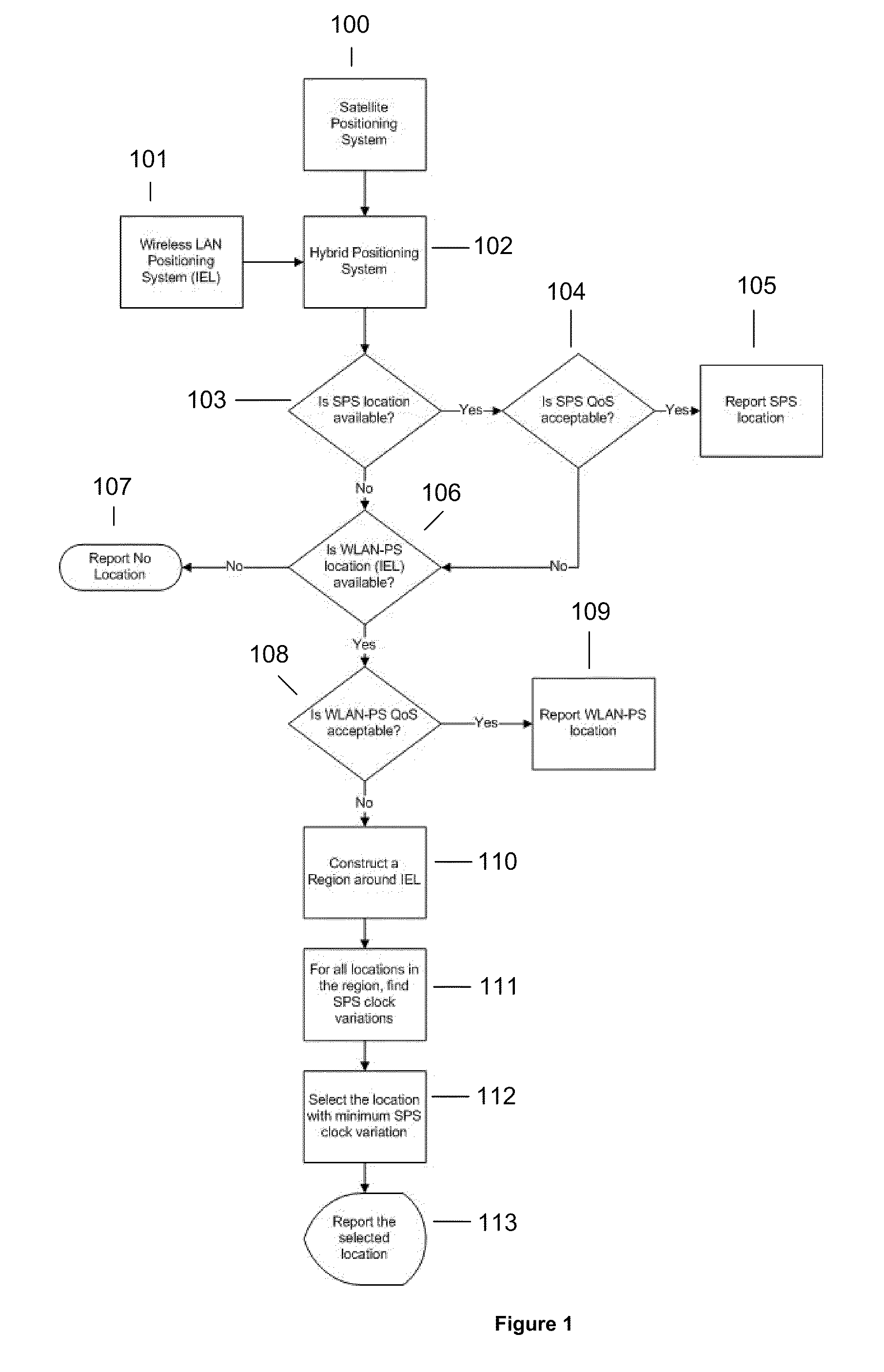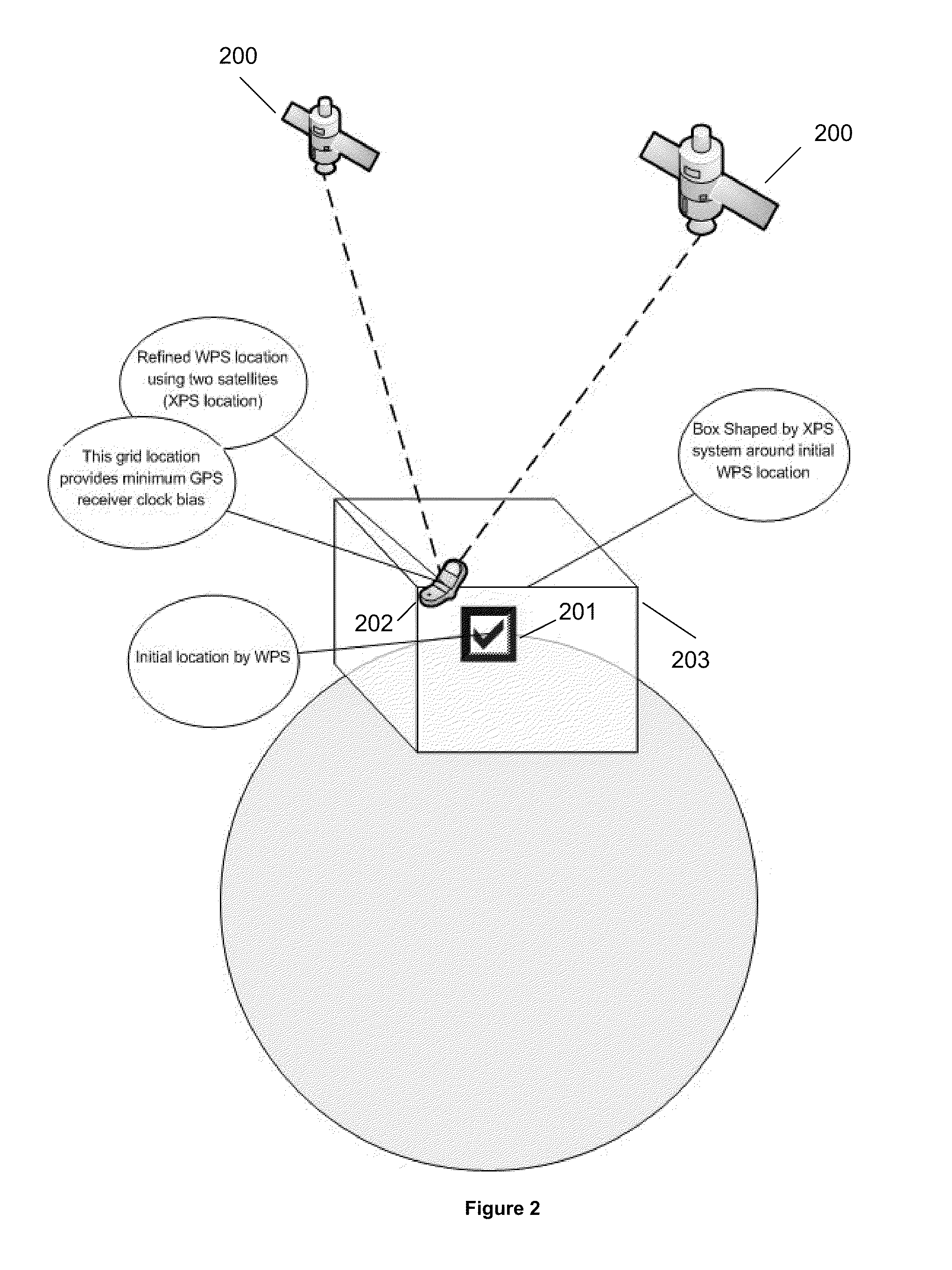Accuracy and performance of a hybrid positioning system
a hybrid positioning and accuracy technology, applied in the field of hybrid positioning, can solve the problems of inaccurate range estimation, inability to use hybrid positioning, and difference between the receiver clock and the satellite clock, and achieve the effect of faster and relatively more accurate final estimate, accurate final location estimate, and more accurate results
- Summary
- Abstract
- Description
- Claims
- Application Information
AI Technical Summary
Benefits of technology
Problems solved by technology
Method used
Image
Examples
Embodiment Construction
[0044]The following disclosure relates to systems and methods for evaluating the quality of either a set of satellites or individual satellites in a hybrid positioning system. The quality of the set satellites is evaluated using receiver clock bias. In that capacity, a high quality set of satellites is the one that satellites show consistency in predicting receiver clock bias. For that matter, all the estimations of receiver clock bias from different satellites should be close to one another. On the other hand, a bad quality set of satellites is the one that shows large variations when receiver clock bias is estimated for all satellites. In order to determine receiver clock bias for each satellite, the WLAN positioning system, in the hybrid system, provides an IEL and a region of error around that IEL. The shape and size of the region of error is based on IEL and its accuracy and hence this region relates to the quality of the IEL measurement (QoS). The IEL and the region of error c...
PUM
 Login to View More
Login to View More Abstract
Description
Claims
Application Information
 Login to View More
Login to View More - R&D
- Intellectual Property
- Life Sciences
- Materials
- Tech Scout
- Unparalleled Data Quality
- Higher Quality Content
- 60% Fewer Hallucinations
Browse by: Latest US Patents, China's latest patents, Technical Efficacy Thesaurus, Application Domain, Technology Topic, Popular Technical Reports.
© 2025 PatSnap. All rights reserved.Legal|Privacy policy|Modern Slavery Act Transparency Statement|Sitemap|About US| Contact US: help@patsnap.com



